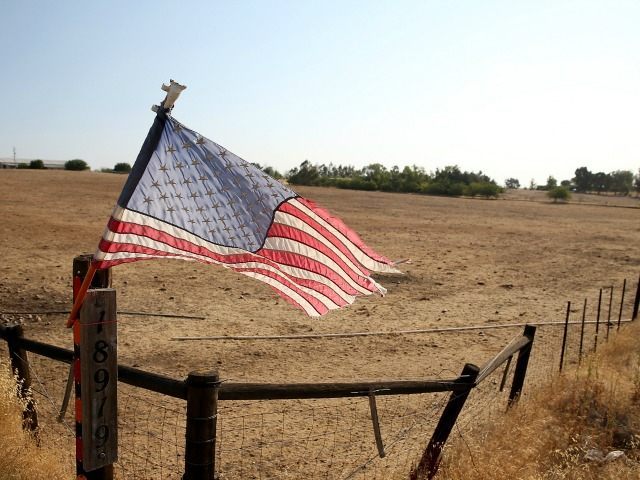What happened to the Golden State? In the mid-twentieth century, California was the American Dream within the American Dream; a booming economy, vibrant middle-class, and an unshakeable optimism for the future were hallmarks of a state that had become the crown jewel of the Empire of Liberty.
Historian Victor Davis Hanson chronicles the sad decline of the once great state of California in his book, The Decline and Fall of California: From Decadence to Destruction. Clearly modeled on famous British historian Edward Gibbon’s Decline and Fall of the Roman Empire, Hanson’s book makes it clear that the increasingly dystopian California has been the author of its own decline. A half-century of bad policy and failed ideology has reduced the Golden State to a shell of its former glory.
Hanson—a college professor, a Senior Fellow at the Hoover Institution, and an expert in the classics—is a product of many generations of Californians who made their home in the state’s mostly agricultural central valley. Few come closer to Thomas Jefferson’s idealized philosopher-farmer than Hanson, who is highly educated in history, warfare, and philosophy, yet runs a working farm like his forefathers.
Unfortunately, Hanson’s prognosis for California is bleak—especially for conservatives and middle-class Americans. “The old blue/red war for California is over,” Hanson writes. “Conservatives lost. Liberals won—by a combination of flooding the state with government-supplied stuff, and welcoming millions in while showing the exit to others. The only mystery is how Carthaginian will be the victor’s peace, e.g., how high will taxes go, how many will leave, how happy will the majority be at their departure?”
California’s conservative holdovers will understand. The Republican Party’s power in the state is relegated to a few holdouts from the less populated, red interior. Most of the California GOP’s leadership embraces the most watered-down “me-too” liberalism. The feeble resistance to the left’s big government designs mostly comes from moderate Democrats if it comes at all. It is clear that Hanson is mostly attempting to warn fellow Americans about a future that looks like California, rather than preach to his native state which is intent to keep the wheels of history turning in a militantly progressive direction.
Though Californians are overtaxed and over-regulated as a general rule, the state of the infrastructure is in prolific decay. How can this be? Hanson writes that while their forefathers created an incredibly efficient system of infrastructure and water management, Californians reversed this trend in the 1970s—they opted for low-growth, environmentalist policies that simply could not handle an explosion in population. The philosophy of if you don’t build it they won’t come didn’t work as the state’s population has nearly doubled in 30 years.
Hanson writes:
The sin of not investing in “infrastructure” to keep up with population growth was compounded by a greater sin still of misappropriating infrastructure. Those who had stopped the building of more unnatural dams—a green movement birthed among the opulence of Northern California that sought exemption from the ramifications of its own ideology—now wanted infrastructure to store the water necessary for its own dreams of replenishing salmon in the rivers.
The impact of these policies has been enormous. The agricultural heart of the state has dried up, the middle-class has fled to more favorable tax environments, and new, mostly illegal immigrants—who come in droves due to the open borders policies of the state’s elites—find fewer and fewer opportunities to rise out of their condition. However, the elites are mostly ensconced in affluent corridors and immune to the negative effects of their ideas.
Hanson writes that “as in most of California’s existential crises—budgeting, infrastructure, pensions, immigration, education, law enforcement—the problem lies in its thin coastal corridor, a surreal place where liberal grandees assume that they are exempt from the chaotic ramifications of their own utopian ideologies.”
“There is a great sickness in California, home of the greatest number of American billionaires and poor people, land of the highest taxes and about the worst schools and roads in the nation,” Hanson writes. “The illness is a new secular religion far more zealous and intolerant than the pre-Reformation zealotry of the Church. Modern elite liberalism is based on the simple creed that one’s affluence and education, one’s coolness and zip code, should shield him from the consequences of one’s bankrupt thoughts that he inflicts on others.”
The situation seems dire and bleak for those who wish to restore the state. Though Hanson has a tiny sliver of hope that the new, mostly Mexican and Latin-America residents will someday rise to the level of middle and upper-middle class and throw out their coastal elite overlords.
“Is there hope? Can there be honesty about our crises and courage to address them?” Hanson writes. “I sometimes fantasize that a new conservative movement of second- and third-generation upper middle-class, over-taxed Mexican-Americans will demand competitive schools for their children without the fantasies of Chicano studies and coastal global warming indoctrination.”
Hanson hopes that this new middle class “will push for energy development, beefed-up law enforcement, and reasonable taxes and power rates, and so lock horns with the coastal elites, well apart from abortion, the death penalty, and the constant alternative lifestyle agenda. Some already are heading that way; more would if the borders were closed and the old forces of the melting pot were not impeded.”
Hanson’s book is an excellent primer for Californians and Americans in general to discover what went wrong in a state with almost unlimited natural and geographical advantages. It is a dissection of the rapid descent of the Golden State that stood above all others in power, wealth, and prestige–to a national laughingstock in three generations.
Follow Jarrett Stepman on Twitter:@JarrettStepman. Reach him directly at jstepman@breitbart.com.

COMMENTS
Please let us know if you're having issues with commenting.